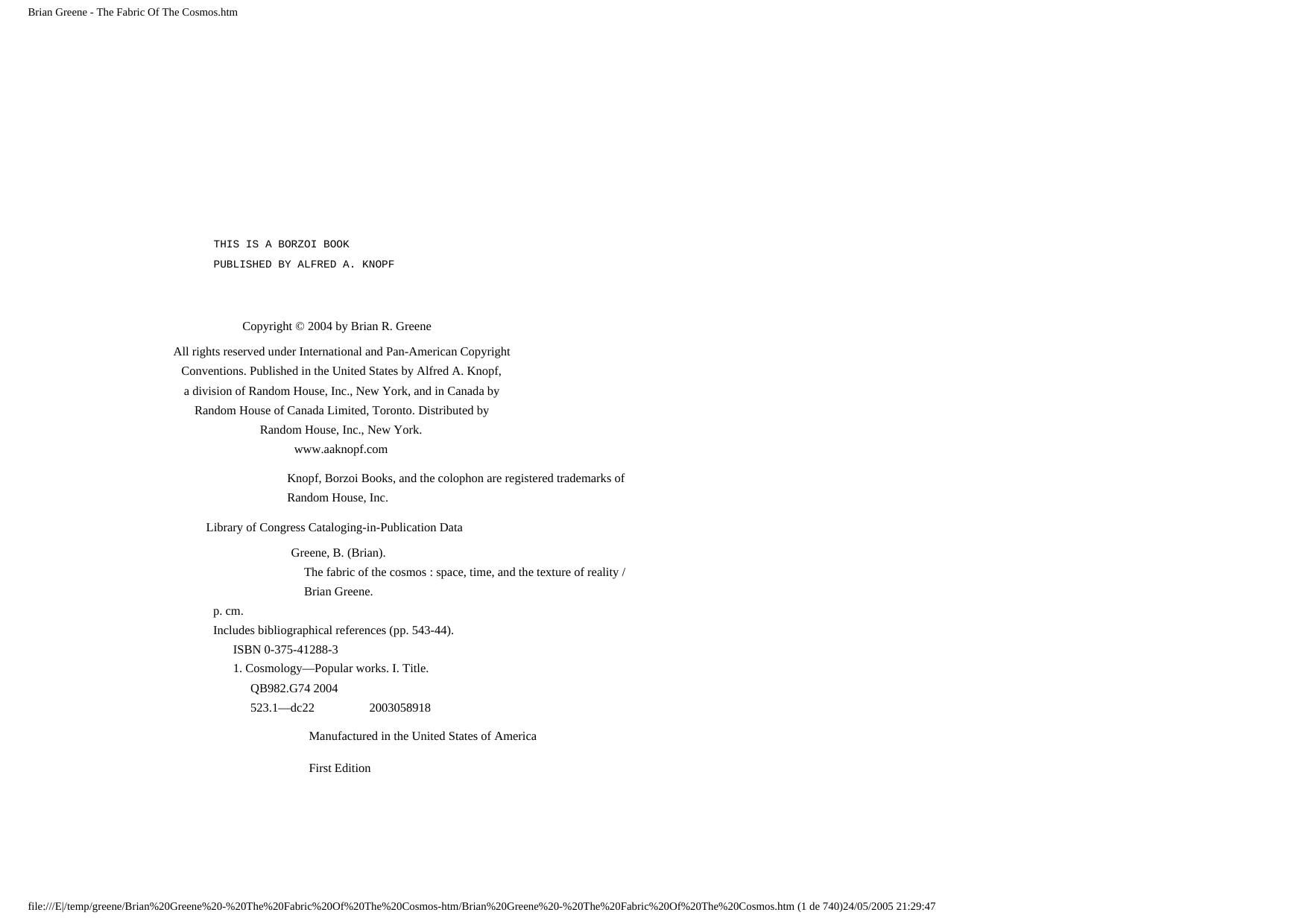The Fabric of the Cosmos: Space, Time, and the Texture of Reality by Brian Greene

Author:Brian Greene [Greene, Brian]
Language: eng
Format: epub, mobi, azw3, pdf
Tags: Science, Cosmology, Popular works, Astronomy, Physics, Universe
ISBN: 9780375727207
Publisher: Alfred A. Knopf
Published: 2004-07-01T04:00:00+00:00
Inflation and the Flatness Problem
A second problem addressed by inflationary cosmology has to do with the shape of space. In Chapter 8, we imposed the criterion of uniform spatial symmetry and found three ways in which the fabric of space can curve. Resorting to our two-dimensional visualizations, the possibilities are positive curvature (shaped like the surface of a ball), negative curvature (saddle-shaped), and zero curvature (shaped like an infinite flat tabletop or like a finite-sized video game screen). Since the early days of general relativity, physicists have realized that the total matter and energy in each volume of space—the matter/energy density— determine the curvature of space. If the matter/energy density is high, space will pull back on itself in the shape of a sphere; that is, there will be positive curvature. If the matter/energy density is low, space will flare outward like a saddle; that is, there will be negative curvature. Or, as mentioned in the last chapter, for a very special amount of matter/energy density—the critical density, equal to the mass of about five hydrogen atoms (about 10 -23 grams) in each cubic meter—space will lie just between these two extremes, and will be perfectly flat: that is, there will be no curvature.
Now for the puzzle.
The equations of general relativity, which underlie the standard big bang model, show that if the matter/energy density early on was exactly equal to the critical density, then it would stay equal to the critical density as space expanded. 17 But if the matter/energy density was even slightly more or slightly less than the critical density, subsequent expansion would drive it enormously far from the critical density. Just to get a feel for the numbers, if at one second ATB, the universe was just shy of criticality, having 99.99 percent of the critical density, calculations show that by today its density would have been driven all the way down to .00000000001 of the critical density. It's kind of like the situation faced by a mountain climber who is walking across a razor-thin ledge with a steep drop off on either side. If her step is right on the mark, she'll make it across. But even a tiny misstep that's just a little too far left or right will be amplified into a significantly different outcome. (And, at the risk of having one too many analogies, this feature of the standard big bang model also reminds me of the shower years ago in my college dorm: if you managed to set the knob perfectly, you could get a comfortable water temperature. But if you were off by the slightest bit, one way or the other, the water would be either scalding or freezing. Some students just stopped showering altogether.)
For decades, physicists have been attempting to measure the matter/ energy density in the universe. By the 1980s, although the measurements were far from complete, one thing was certain: the matter/energy density of the universe is not thousands and thousands of times smaller or larger than the critical density; equivalently, space is not substantially curved, either positively or negatively.
Download
The Fabric of the Cosmos: Space, Time, and the Texture of Reality by Brian Greene.mobi
The Fabric of the Cosmos: Space, Time, and the Texture of Reality by Brian Greene.azw3
The Fabric of the Cosmos: Space, Time, and the Texture of Reality by Brian Greene.pdf
This site does not store any files on its server. We only index and link to content provided by other sites. Please contact the content providers to delete copyright contents if any and email us, we'll remove relevant links or contents immediately.
Tools of Titans by Timothy Ferriss(8218)
Turbulence by E. J. Noyes(7936)
Secrets of Antigravity Propulsion: Tesla, UFOs, and Classified Aerospace Technology by Ph.D. Paul A. Laviolette(5309)
Astrophysics for People in a Hurry by Neil DeGrasse Tyson(5132)
Room 212 by Kate Stewart(5037)
Design of Trajectory Optimization Approach for Space Maneuver Vehicle Skip Entry Problems by Runqi Chai & Al Savvaris & Antonios Tsourdos & Senchun Chai(5011)
Pale Blue Dot by Carl Sagan(4912)
The David Icke Guide to the Global Conspiracy (and how to end it) by David Icke(4625)
A Journey Through Divination and Astronomy by Publishing Pottermore(4344)
Goodbye Paradise(3727)
Apollo 8 by Jeffrey Kluger(3637)
COSMOS by Carl Sagan(3554)
Losing the Nobel Prize by Brian Keating(3499)
The Five People You Meet in Heaven by Mitch Albom(3475)
How to Read Water: Clues and Patterns from Puddles to the Sea (Natural Navigation) by Tristan Gooley(3406)
Brief Answers to the Big Questions by Stephen Hawking(3369)
How to Read Nature by Tristan Gooley(3249)
The Order of Time by Carlo Rovelli(3145)
A Brief History of Time by Stephen Hawking(2960)
